Scotland on Sunday Travel – Sir Walter Scott’s Borders inspiration
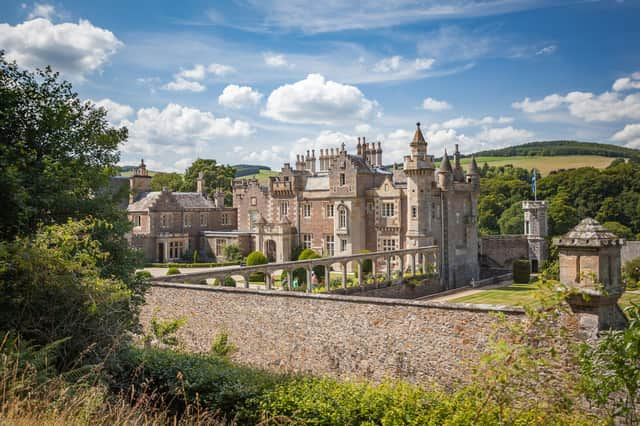

Inspiration can come from many places. For Sir Walter Scott, it was the history and his surroundings in the Scottish Borders that fuelled much of his early writing.
Getting back into the Borders after months of city-based lockdown you see just how inspiring this landscape can be. And Scott, the writer, politician and man of the law who was born 250 years ago on 15 August, 1771 in Edinburgh, is a great guide to exploring the area today.
Advertisement
Hide AdAdvertisement
Hide AdThe first book Scott published – Minstrelsy of the Scottish Borders – in 1802 was a collection of Border ballads, the history and folklore which had been passed down by word of mouth through the generations.
Scott would have first have heard these tales when he stayed with his grandparents as a child after he had contracted polio. Firing the little boy’s imagination must have been Smailholm, the nearby tower house, typical of the Reivers who held sway in these lawless lands.
From its perch on the crags, the tower’s defensive position looking over the Eildon Hills harks back to the cross-border warfare, outlaws and cattle raiders which dominated the area’s history.
Then, in 1805 when he published his own ballad – The Lay of the Last Minstrel – a romantic tale of Border chivalry, he paints vivid descriptions of landmarks such as Melrose Abbey where in moonlight “buttress and buttress alternately, seem framed of ebon and ivory”.
These two works paved his way to becoming one of the 19th century’s greatest – and most loved – writers.
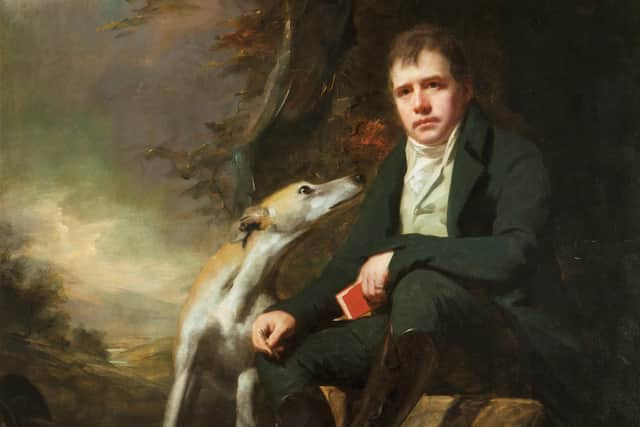

Having been appointed Sheriff-Depute of Selkirkshire in 1799, Scott’s professional life was largely in the Borders and he combined his writing and editing with his legal career.
Although some of his most famous works, such as the Waverley novels, are based in the Trossachs, it was between Melrose and Selkirk that he made his home, buying a farm in 1811.
With his fame, fortune and family growing, Scott transformed in stages the original farm, creating Abbotsford, which – at great financial and personal cost – was completed in 1824.
Advertisement
Hide AdAdvertisement
Hide AdI think we all expect it to be a grand house. It’s not: it has a comfortable scale and you can imagine his family living there. It is not ostentatious, although it is certainly designed to impress. And he lavished it with treasures.
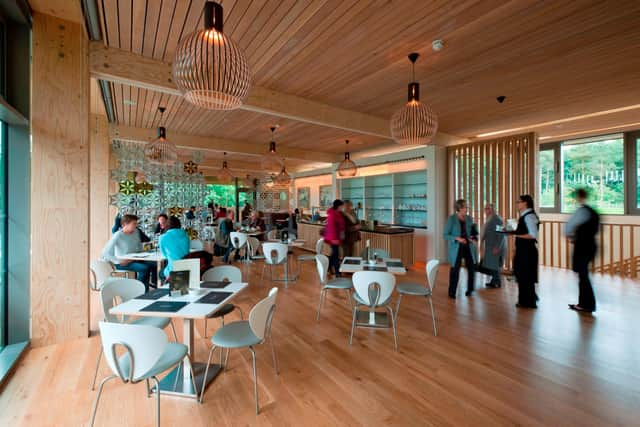

The entrance hall is bristling with artefacts. Once you draw breath, you’ll test your historical knowledge as you work out all the references – to his family, Scotland and figures that had become an important part of his writing by the time he was building the house.
Abbotsford might hark back to the past with its historical references, but it is also a modern house – there’s central heating and gas lighting and these were real innovations at the time it was constructed – and yet it was built by local crafts people.
Today the Abbotsford Trust, which has been running the estate since 2007 after Scott’s last descendant living in the house died, is its custodian.
Scott could almost be upstairs as you tour Abbotsford: the books you see are almost untouched since he lived there. And the desk you see is the one where one of Scotland’s most prolific authors found the inspiration for his writing.
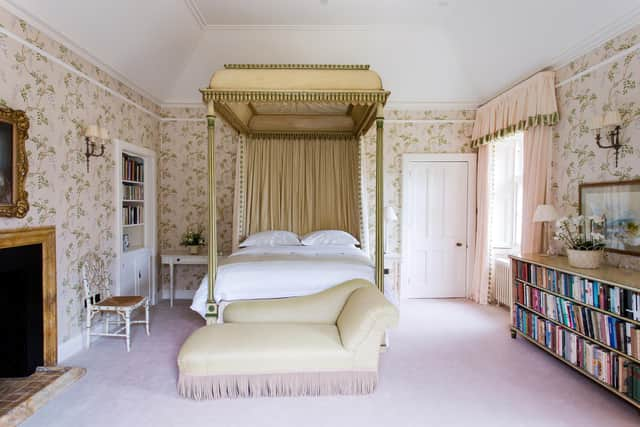

As his popularity grew, readers wanted to see the places he wrote about, and Scott was popular host to the stream of guests he welcomed at Abbotsford.
Readers were also visiting the places he wrote about. As Bruce Jackson, my guide to Abbotsford, explained: “They used to have night-time tours of Melrose Abbey and Scott himself said on one occasion that it was really quite ironic as he had never actually seen Melrose Abbey in moonlight because he didn’t live that close to it when he was writing his poetry.”
The architecture of the abbey is also reflected in some of the features you can see in Abbotsford and there are “rescued” artefacts in the grounds.
Advertisement
Hide AdAdvertisement
Hide AdExploring Scott’s inspiration is an obvious option for modern day tourists. Scott’s View is said to be where the author’s horses knew to pause so he could stop to admire the lush landscape of the Tweed Valley.
In Selkirk, there’s the court house where Scott was practising as sheriff and his statue is in the middle of the town.
And his final resting place – Dryburgh Abbey – is a contemplative spot. The remarkably-complete ruins are an inspiration in themselves: with the stones witness to many key points of Borders history.
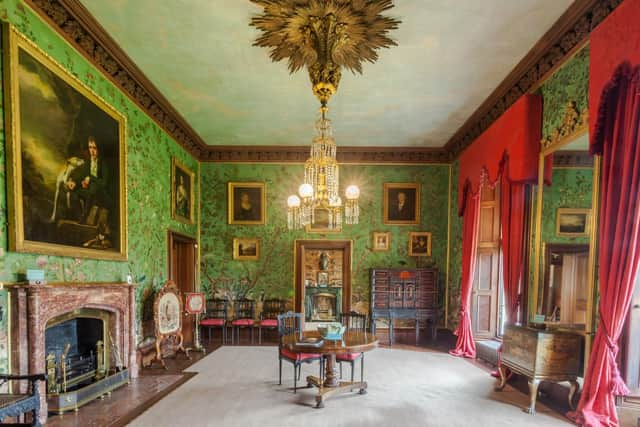

After Scott’s death in 1832, the visitors to Abbotsford continued. “His family weren’t financially well off and visitors were charged to see the house,” explains Giles Ingram, the chief executive of Abbotsford.
“For that reason the rooms people visit today are so remarkably untouched. They are very much as Scott left them because that is what people wanted to see.”
By the 1850s, the numbers were so high that the family had to alter the entrance so that visitors approached via a sunken walkway to keep them out of their sight.
The house also worships the landscape around it, with its glorious rooms overlooking the River Tweed and its lush surroundings. Visitors can explore the charming formal gardens close to the house, while everyone is free to roam through the wider estate.
In his lifetime, Scott was conscious of the health benefits of the outdoors and adamant the estate was open to anyone. That tradition of free access continues with thousands enjoying the grounds – particularly through the pandemic.
Advertisement
Hide AdAdvertisement
Hide AdThe modern visitor centre is an attraction in its own right, with an exhibition about Scott’s life. Armed with the details, the popular café is an ideal place to pause and contemplate what Scott called “this whimsical place which I have christened Conundrum Castle”.
Home baking is always a welcome addition to understanding where Scott’s inspiration took root.
Year of celebrations
Events to mark the 250th anniversary of Scott’s birth are planned until August 2022, with celebrations taking place all over the world. It started in March with a spectacular light show at Smailholm, the Reivers’ tower near Scott’s grandparents’ farm in Roxburghshire. With storytelling, theatre, opera, a Dandie Dinmont derby, exhibitions and talks all on the cards, there’s plenty for all tastes and ages. This year, Abbotsford will mark the anniversary of Scott’s birth on 15 August with an Ivanhoe-themed weekend of activities. In November, the Borders Book Festival (bordersbookfestival.org) will be held in the grounds of the house. Walter Scott 250 Partnership www.walterscott250.com
Abbotsford, near Melrose, Roxburghshire, TD6 9BQ www.scottsabbotsford.com
Timed entry tickets - Adults £11.70 (child £5.10); The Hope Scott Wing of the house is luxury self- catering accommodation, available from £2,487 for two nights. It sleeps up to 16.
Scottish Borders tourist information www.visitscottishborders.com
